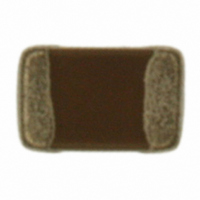ECJ-2F60J226M Panasonic - ECG, ECJ-2F60J226M Datasheet - Page 10

ECJ-2F60J226M
Manufacturer Part Number
ECJ-2F60J226M
Description
CAP CERAMIC 22UF 6.3V 0805 X6S
Manufacturer
Panasonic - ECG
Series
ECJr
Datasheets
1.ECJ-RVB1H332M.pdf
(6 pages)
2.ECJ-RVB1H332M.pdf
(2 pages)
3.ECJ-RVB1H332M.pdf
(1 pages)
4.ECJ-RVB1H332M.pdf
(3 pages)
5.ECJ-2F60J226M.pdf
(24 pages)
Specifications of ECJ-2F60J226M
Capacitance
22µF
Voltage - Rated
6.3V
Tolerance
±20%
Temperature Coefficient
X6S
Mounting Type
Surface Mount, MLCC
Operating Temperature
-55°C ~ 105°C
Features
Low ESR
Applications
General Purpose
Package / Case
0805 (2012 Metric)
Size / Dimension
0.079" L x 0.049" W (2.00mm x 1.25mm)
Thickness
1.25mm
Lead Free Status / RoHS Status
Lead free / RoHS Compliant
Ratings
-
Lead Spacing
-
Other names
ECJ2F60J226M
PCC2477TR
PCC2477TR
CLASSIFICATION
SUBJECT
1.
2.
2- 1.Circuit Design
Note ;
!
Precautions for Use
Operating Conditions and Circuit Design
2-1-1. Operating Temperature and Storage Temperature
2-1-2. Design of Voltage application
2-1-3. Working Current
2-1-4. Self-Heating of Capacitors
2-1-5. Restriction on Environmental Conditions
2-1-6. DC voltage characteristics
The Multilayer Ceramic Chip Capacitors (hereafter referred to as “Capacitors”) may fail in a short circuit mode in
an open-circuit mode when subjected to severe conditions of electrical, environmental and/or mechanical stress
beyond the specified “Rating and specified “Conditions” in the Specifications, resulting in burn out, flaming or
glowing in the worst case. The following “Precautions for Safety” and “Application Notes” shall be taken in your
major consideration for use.
The Capacitors shall not be operated exceeding the specified “Rated Voltage” in the Specification.
If voltage ratings are exceeded, the Capacitors could result in failure or damage. In case of application of DC
and AC voltages to the Capacitors, the designed peak voltage shall be within the specified “Rated Voltage”.
In case of AC of pulse voltage, the peak voltage shall be within the specified “Rated Voltage”. If high frequency
voltage or fast rising pulse voltage is applied continuously even within the “Rated Voltage”, contact our
engineering section before use. Such continuous application affects the life of the Capacitors.
It is recommended to equip the Capacitors with protection circuits for safety reasons, as should the Capacitors
short circuit with voltages such as secondary voltage, there will be a serious risk that the Capacitors might
self-heat or circuit boards might burn out.
When the Capacitors self-heat as a result of using AC or pulse voltage circuits and operate at room
temperatures (25deg.C max.), make sure that the Capacitors’ surface temperature does not exceed the ambient
temperature plus 20 deg.C (max.), or the maximum operating temperature specified in product specification for
approval. Also, the temperature of the Capacitors’ surface which varies with circuit types used should be
measured under the operational mode of devices mounted on by the Capacitors.
The Capacitors shall not be operated and / or stored under the following environmental conditions.
The capacitance of Class 2 Capacitors has voltage dependency, contributing to big capacitance fluctuations in
high DC voltage application. To secure specified capacitance, the following should be confirmed.
The specified “Operating Temperature Range” in the Specifications is the absolute maximum and minimum
temperature rating. Every circuit mounting a Capacitor shall be operated within the specified “Operating
Temperature Range”. The Capacitors mounted on PCB shall be stored without operating within the specified
“Storage Temperature Range” in the Specifications.
(1) Environmental conditions
(2) Under severe conditions of vibration or impact beyond the specified conditions in the Specifications
(1) That the capacitance fluctuations caused by voltage application are within the capacitance range of a circuit
(2) DC voltage characteristics demonstrate, even if applied voltage is under the rated voltage, capacitance
(a) To be exposed directly to water or salt water
(b) To be dew formation
(c) Under conditions of corrosive gases such as hydrogen sulfide, sulfurous acid, chlorine and ammonia
used, or if the capacitance range of a circuit used is broad enough to maintain the Capacitors’ functions.
change rate increases with higher voltage (Capacitance down). Accordingly, when the Capacitors are used
for circuits with narrow capacitance allowable range such as time constant circuits, we recommend to apply
lower voltage upon due consideration on capacitance aging in addition to the above.
Panasonic Electronic Devices Co., Ltd.
Common Specification ( Precautions for Use)
Multilayer Ceramic Chip Capacitor
SPECIFICATIONS
APPROVAL
T.Kawamura
CHECK
T.Shinriki
No.
PAGE
DATE
151S-ECJ-SS018E
Apr. 1, 2008
1 of 9
DESIGN
A.Konishi
















